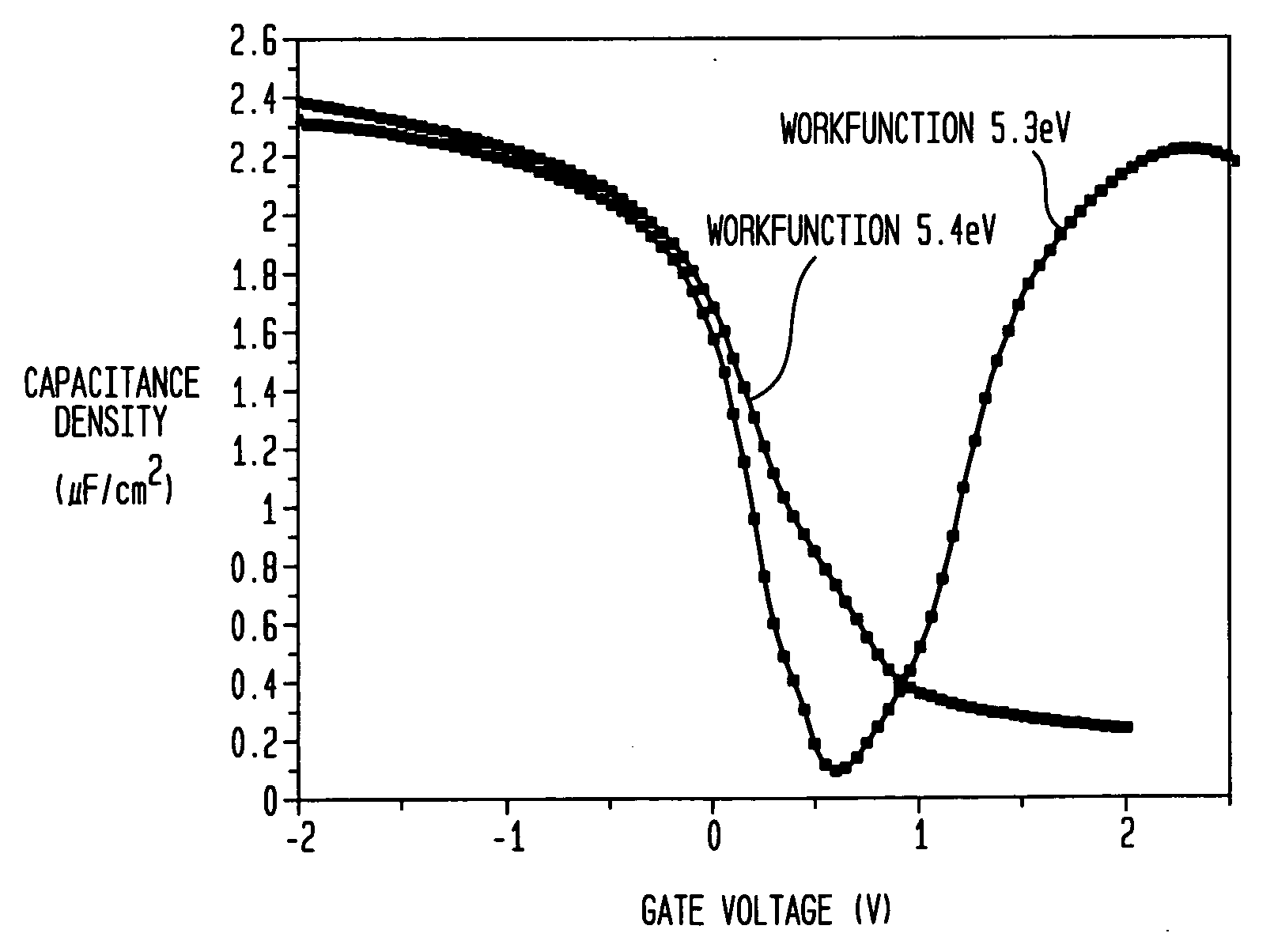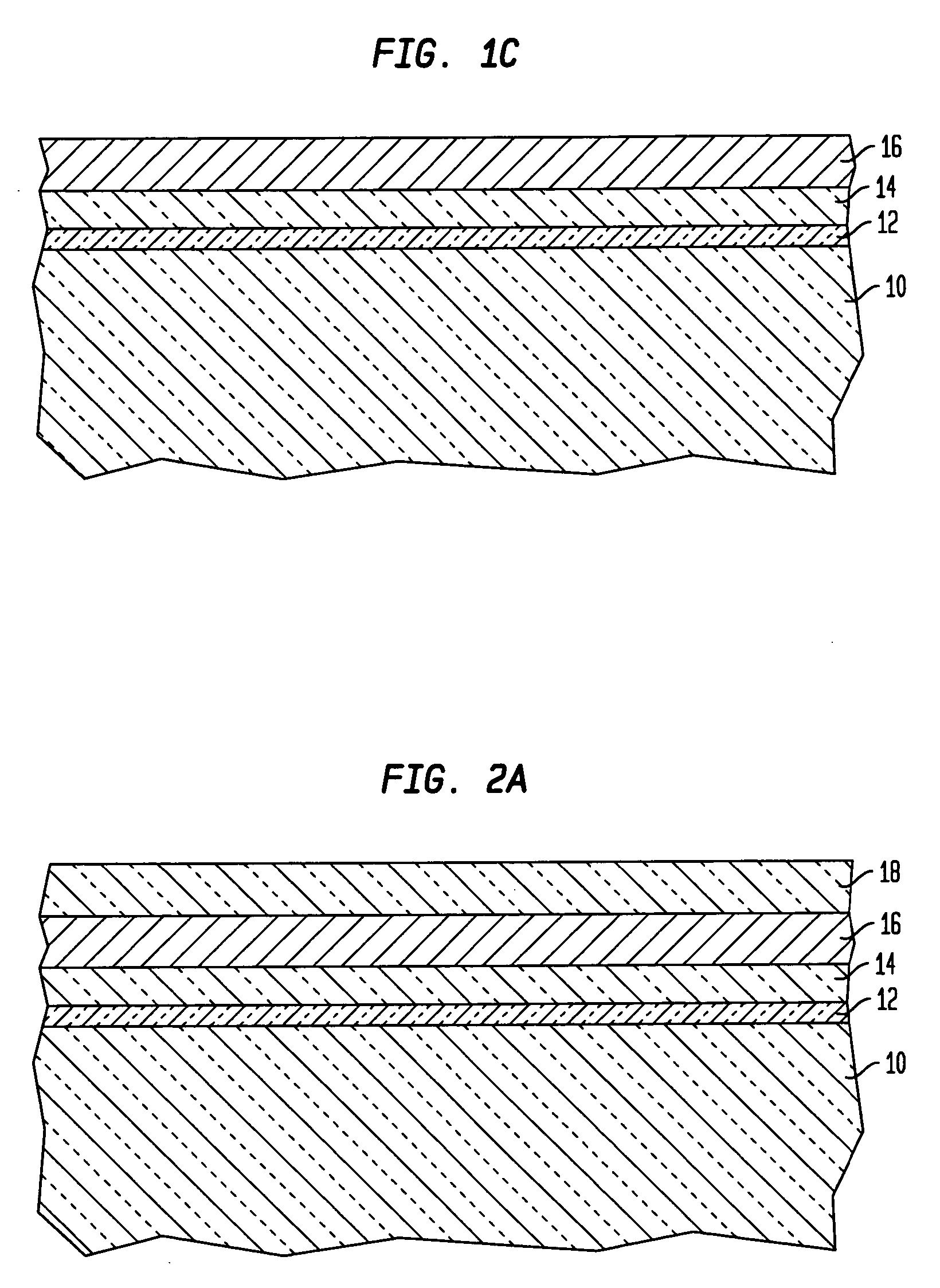Metal oxynitride as a pFET material
a technology of metal oxynitride and pfet, which is applied in the direction of semiconductor devices, basic electric elements, electrical equipment, etc., can solve the problems of further degradation of device performance, single metals not thermally stable on a high, and use of polysilicon gates
- Summary
- Abstract
- Description
- Claims
- Application Information
AI Technical Summary
Benefits of technology
Problems solved by technology
Method used
Image
Examples
example
[0060] In this example, a TiOxNy / HfO2 / SiO2 stack was formed on a surface of a p-type Si wafer and an n-type Si wafer. The SiO2 interfacial layer was formed by oxidation of the Si wafer. The thickness of the SiO2 interfacial layer was about 1 nm. A HfO2 dielectric having a thickness of about 3 nm was then formed on the SiO2 interfacial layer by MOCVD. The TiOxNy layer was then formed by sputtering in an Ar / N2 atmosphere from a Ti target. The sputtering was performed in a long throw system (6″ separation between the substrate and target) and, as such, 25 atomic percent oxygen was incorporated into the Ti metal from a pre-sputter background pressure of about 1×10−7 Torr. The TiOxNy layer had a thickness of about 30 nm.
[0061] After providing the stack, the stack was subjected to a rapid thermal anneal at 1000° C. in N2 and a forming gas at 450° C. anneal was separately performed. FIG. 3 shows the CV characteristics of this stack on both the n-type substrate and the p-type substrate. Th...
PUM
| Property | Measurement | Unit |
|---|---|---|
| workfunction | aaaaa | aaaaa |
| workfunction | aaaaa | aaaaa |
| pressure | aaaaa | aaaaa |
Abstract
Description
Claims
Application Information
 Login to View More
Login to View More - R&D
- Intellectual Property
- Life Sciences
- Materials
- Tech Scout
- Unparalleled Data Quality
- Higher Quality Content
- 60% Fewer Hallucinations
Browse by: Latest US Patents, China's latest patents, Technical Efficacy Thesaurus, Application Domain, Technology Topic, Popular Technical Reports.
© 2025 PatSnap. All rights reserved.Legal|Privacy policy|Modern Slavery Act Transparency Statement|Sitemap|About US| Contact US: help@patsnap.com



